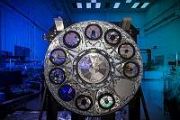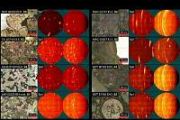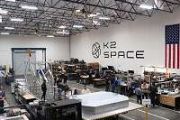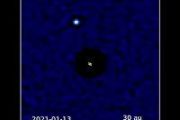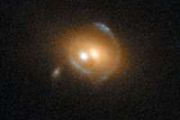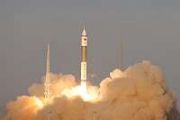
Copernical Team
In The Presence Of Royalty: Sols 4112-4113
 Earth planning date: Wednesday, February 28, 2024: Over the weekend Curiosity successfully drilled into 'Mineral King!' The drilling stopped a little short of the target depth, however we think there was enough sample to be sent for analysis. 'Mineral King' has now been analyzed within the CheMin instrument, and we are awaiting the results.
After we see those results tomorrow morning, we w
Earth planning date: Wednesday, February 28, 2024: Over the weekend Curiosity successfully drilled into 'Mineral King!' The drilling stopped a little short of the target depth, however we think there was enough sample to be sent for analysis. 'Mineral King' has now been analyzed within the CheMin instrument, and we are awaiting the results.
After we see those results tomorrow morning, we w Bunsen Peak Piques Interest
 Perseverance has continued its traverse west through the Margin unit. As the rover drives, images and data are obtained using instruments such as Mastcam-Z, Navcam, and SuperCam to track any changes in the chemistry or appearance of the rocks.
Along the way, the science team used these images to pick out an exciting rock named Bunsen Peak. This rock was intriguing because it stands tall am
Perseverance has continued its traverse west through the Margin unit. As the rover drives, images and data are obtained using instruments such as Mastcam-Z, Navcam, and SuperCam to track any changes in the chemistry or appearance of the rocks.
Along the way, the science team used these images to pick out an exciting rock named Bunsen Peak. This rock was intriguing because it stands tall am Depositional Processes of the Margin Unit
 There has been much discussion and interest regarding the origin of the Margin unit. The Margin unit has gained interest due to the presence of carbonates and its implications for the paleoenvironment and biosignature preservation of ancient Mars.
There are several possible origins for the Margin unit, and further analysis of these rocks will shed light on what environment the Margin unit
There has been much discussion and interest regarding the origin of the Margin unit. The Margin unit has gained interest due to the presence of carbonates and its implications for the paleoenvironment and biosignature preservation of ancient Mars.
There are several possible origins for the Margin unit, and further analysis of these rocks will shed light on what environment the Margin unit Iran launches imaging satellite through Russia
 Russia on Thursday put into orbit an Iranian remote sensing and imaging satellite, state media said in Tehran, drawing condemnation from the United States.
The launch of "Pars-I" with the Russian Soyuz-2.1b rocket was broadcast live by state television in Iran.
The satellite was launched from Russia's Vostochny base, some 8,000 kilometres (5,000 miles) east of Moscow, according to the of
Russia on Thursday put into orbit an Iranian remote sensing and imaging satellite, state media said in Tehran, drawing condemnation from the United States.
The launch of "Pars-I" with the Russian Soyuz-2.1b rocket was broadcast live by state television in Iran.
The satellite was launched from Russia's Vostochny base, some 8,000 kilometres (5,000 miles) east of Moscow, according to the of Proba-3 Mission Prepares for Precision Formation Flying with Laser Metrology Tests
 In a significant step toward realizing the European Space Agency's (ESA) ambitious Proba-3 mission, a crucial laser-based test campaign is currently underway at Redwire Space's facilities in Kruibeke, Belgium.
This mission, poised to revolutionize our approach to observing the sun, involves two satellites, namely the 'Occulter' and the 'Coronagraph,' which will maintain a precise formation
In a significant step toward realizing the European Space Agency's (ESA) ambitious Proba-3 mission, a crucial laser-based test campaign is currently underway at Redwire Space's facilities in Kruibeke, Belgium.
This mission, poised to revolutionize our approach to observing the sun, involves two satellites, namely the 'Occulter' and the 'Coronagraph,' which will maintain a precise formation Sidus Space to Enhance Capital through Public Offering of Class A Shares and Warrants
 Sidus Space, Inc. (Nasdaq: SIDU), a company known for its innovations in the space sector, has officially announced its intention to conduct a public offering of its Class A common stock. The offering may also include pre-funded warrants as an alternative to the common stock, with all offered securities being sold directly by the company.
ThinkEquity is playing a pivotal role in this offer
Sidus Space, Inc. (Nasdaq: SIDU), a company known for its innovations in the space sector, has officially announced its intention to conduct a public offering of its Class A common stock. The offering may also include pre-funded warrants as an alternative to the common stock, with all offered securities being sold directly by the company.
ThinkEquity is playing a pivotal role in this offer James Webb Telescope Unveils Role of Massive Stars in Planet Formation
 Recent observations from the James Webb Space Telescope (JWST) have shed new light on the complex interplay between massive stars and the formation of planetary systems, offering groundbreaking insights into a long-standing astronomical puzzle. This revelation, stemming from an international collaboration involving CNRS scientists, focuses on a protoplanetary disc within the Orion Nebula, named
Recent observations from the James Webb Space Telescope (JWST) have shed new light on the complex interplay between massive stars and the formation of planetary systems, offering groundbreaking insights into a long-standing astronomical puzzle. This revelation, stemming from an international collaboration involving CNRS scientists, focuses on a protoplanetary disc within the Orion Nebula, named NASA Challenges Students to Innovate with Inflatable Technologies for Lunar Missions
 This year marks a significant milestone for several college and university teams as they embark on a journey to explore, design, and demonstrate innovative inflatable systems tailored for future lunar missions. Sponsored by NASA, the Breakthrough, Innovative and Game-Changing (BIG) Idea Challenge has set the stage for student teams to contribute novel inflatable component and system concepts aim
This year marks a significant milestone for several college and university teams as they embark on a journey to explore, design, and demonstrate innovative inflatable systems tailored for future lunar missions. Sponsored by NASA, the Breakthrough, Innovative and Game-Changing (BIG) Idea Challenge has set the stage for student teams to contribute novel inflatable component and system concepts aim China Reports Progress on Manned Lunar Program with Development of Key Technologies
 The China Manned Space Agency (CMSA) recently provided an update on China's ongoing manned lunar exploration efforts, indicating steady progress toward achieving a manned moon landing before 2030. This ambitious goal is being pursued through the development of several critical technologies and spacecraft, marking significant steps in China's space exploration journey.
Central to these effo
The China Manned Space Agency (CMSA) recently provided an update on China's ongoing manned lunar exploration efforts, indicating steady progress toward achieving a manned moon landing before 2030. This ambitious goal is being pursued through the development of several critical technologies and spacecraft, marking significant steps in China's space exploration journey.
Central to these effo Filmmaker on a mission wants to put astronaut Sally Ride statue in Central Florida

Kennedy Space Center Visitor Complex is home to one. Space Center Houston is another.
Lifelike bronze statues honoring some of the most famous astronauts in history have been finding homes in the space hubs and museums of America in recent years, and documentary filmmaker Steven Barber has had a major hand in each of their placements.
Now he wants to bring a statue commemorating Sally Ride, the first American woman in space, to Central Florida.
His top target is Orlando International Airport, which acknowledged the spirit behind the push, but noted any sort of approval would have to go through a process.
"While we appreciate Mr. Barber's passion in locating a monument at Orlando International to honor beloved astronaut Sally Ride, the preliminary discussions last year were just that—preliminary," according to a statement from the airport's public relations team. "Commissioned and major art pieces at Orlando International undergo a rigorous, pre-established selection process and must fall within our art program policies."
Barber was at Orlando's SpaceCom last month on his mission to drum up interest in the statue efforts but took time to revisit his first project, the Apollo 11 statue of astronauts Neil Armstrong, Buzz Aldrin and Michael Collins that was installed at KSC's Apollo/Saturn V Center Moon Tree Garden in 2019.

















